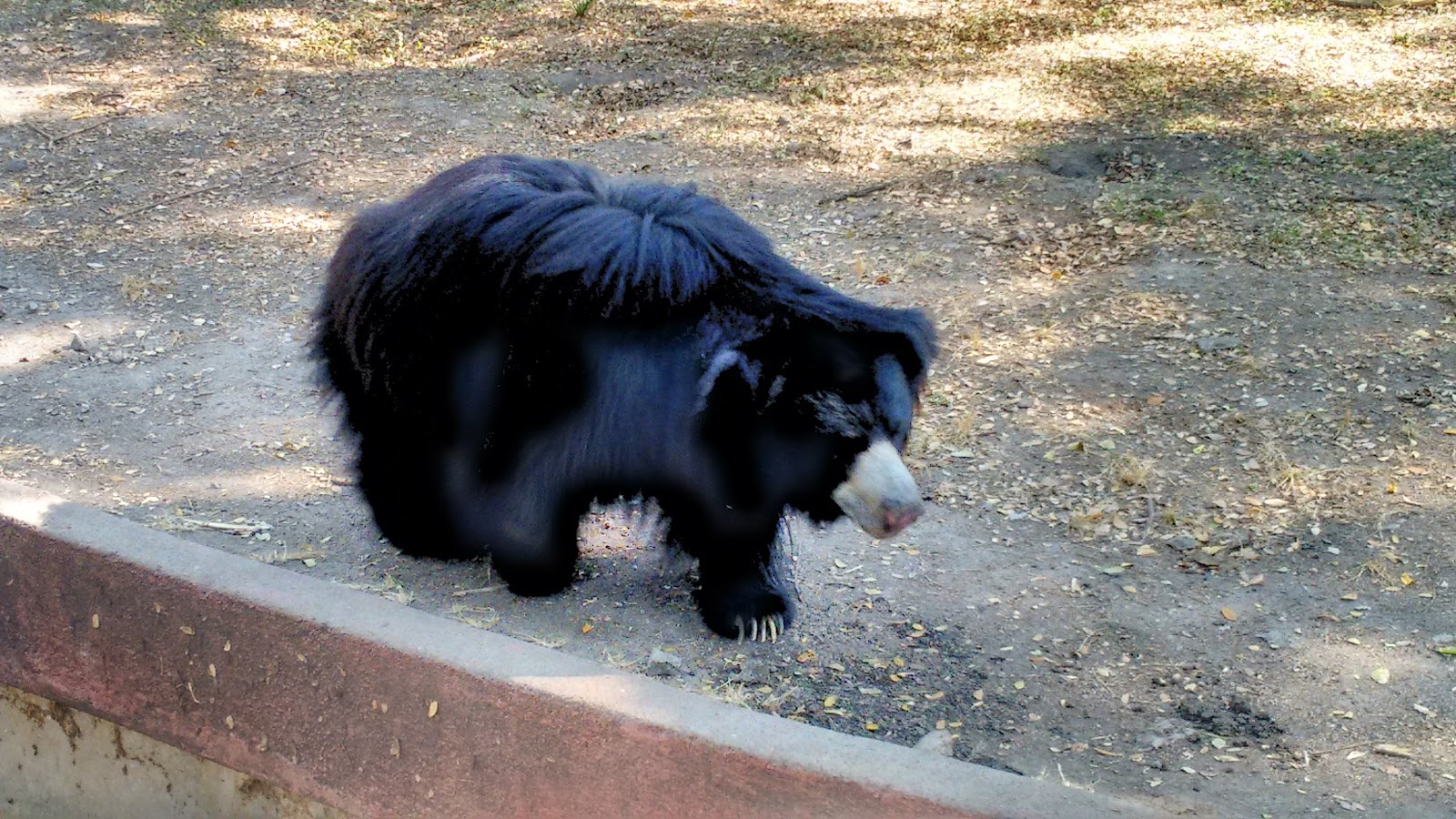A trip to the Hyderabad zoo with my kids had been a long pending one. It finally happened the past weekend. Honestly, my expectations were quite low and I didn't expect to see much or savour the trip as much. General expectations aside, this was partially due to my earlier visit to the same zoo about 10 years back. That was a father-son duo trip as well, but then it was with my father. Apart from spotting a couple of rare animals, it was a largely forgettable experience.
But, I must say the zoo surprised me last week and I was converted into a 'promoter'. Thanks to improvements over time and some major renovations last year, the zoo seems to have got a major face-lift. Things were relatively better organized, the place was clean and there was a good collection of flora and fauna, and all animals seemed to be active and in the pink of health.
The King Cobra caught in its full splendour
The top attractions I found were: white tiger, royal bengal tiger, rhino, hippo, giraffe, an impressive reptile collection including the poisonous big 4, a full section of nocturnal animals including varieties of bats, owls, cats and the porcupine.
 |
 |
 |
 |
Here are some tips on planning your visit, based on my memorable visit:
- Start early: The zoo opens at 8.30 AM and your best bet is to start your visit at that time. You would easily save 2 to 3 hours which otherwise would be wasted lining up in queues for entry or the rides. Choose weekdays if possible.
- Exit early: The zoo gets really busy after 2 PM and the last few hours (until the closing time of 5.30 PM) are unbearably crowded. On an average one needs 4 to 6 hours to cover most attractions, so exiting the afternoon is advisable.
- Go green: Plastic / use-and-throw covers are banned, and rightly so. Strangely, backpacks are not allowed, so plan to carry some normal bags. However, reusable plastic containers & boxes are allowed and there are decent places to have a picnic lunch.
- Carry light: Earlier the use of personal vehicles (cars) inside the zoo was permitted. This has been stopped of late, so one has to depend on the battery car / toy train / rented-cycles to move around. So, carry light and be prepared to walk several kilometers. Of these the battery car and rented-cycles are recommended. The jungle safari is a farce, but for kids not exposed to the wild, this is the only available local alternative.
- Choose the winters: I heard nothing but complaints from people who visited zoo in the summers, fortunately our visit was in the cooler times. In Hyderabad's sweltering summer heat, the place is arid, barren with no sign of water. The animals retreat deep into the cages and catching a good glimpse becomes tough.
So yes, the Hyderabad Zoo is worth a visit!




